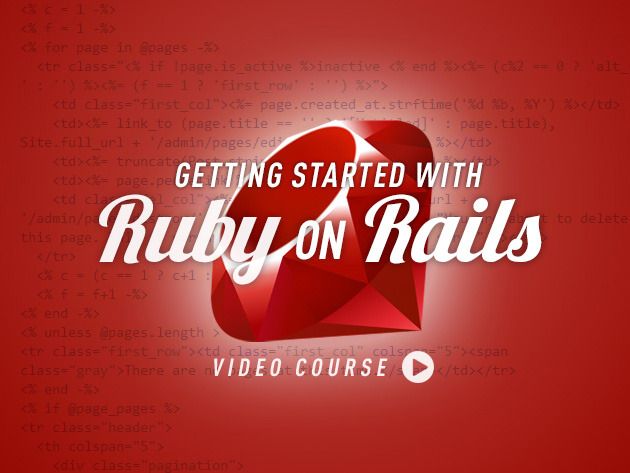- Get Ruby on Rails in no time Rails is low on dependencies and prides itself on shipping with most everything you need in the box. To get started, just install Ruby, the language, and RubyGems, the package manager. We recommend Ruby 2.2 or newer for use with Rails. Rails requires Ruby 1.9.3 or newer.
- This will take about 30 minutes. We will be setting up a Ruby on Rails development environment on Mac OS X 10.10 Yosemite. Older versions of OS X are mostly compatible so follow along as far as you can and then Google search for any problems you run into.
- Upgrade Your System to OS X Mavericks. Installing Ruby on Rails is simple, but unless you.
I'm stuck trying to install rails on my mac. I have OS X 10.6.8 and I have confirmed that I have Ruby, version 1.8.7 I ran sudo gem update and sudo gem update.
Course details
Learn to install all of the software necessary for developing projects in Ruby on Rails, the popular web application framework. This course is designed for developers and other users who want to install and configure Ruby on Rails 5 on their Mac. Kevin Skoglund shows how to use Unix to set up a complete development environment, including Xcode, Homebrew (an open-source software package manager), Ruby, RubyGems, and MySQL. Learn how to select an appropriate text editor and get started creating and launching new Ruby on Rails projects.
Instructor
- Kevin Skoglund builds custom web solutions at Nova Fabrica and teaches web development at LinkedIn Learning.
Kevin Skoglund is the founder of Nova Fabrica, a web development agency specialized in delivering custom, scalable solutions using Ruby on Rails, PHP, SQL, and related technologies. Nova Fabrica clients include An Event Apart, Atlas Carpet Mills, Consulate Film, Gregorius|Pineo, Maharam, Oakley, and The Bold Italic. Kevin is a lynda.com author with over 15 years of teaching and web development experience.
Skills covered in this course
Related courses
Welcome
“- [Kevin] Welcome to Installing Ruby on Rails 5 on Macintosh. My name is Kevin Skoglund. In this tutorial, we will learn to install Ruby on Rails, the popular, open source web development framework. This course is designed to get everything set up, so that you can either start building projects with Ruby on Rails, or continue learning with other Ruby on Rails courses, such as Ruby on Rails Essential Training. In this course, we will learn to use the UNIX command line to make configuration changes, install Ruby on Rails, MySQL, and all of the supporting software that's required, and discuss the web server and text editor options that we can choose. Let's get started installing Ruby on Rails.
Download courses and learn on the go
Watch courses on your mobile device without an internet connection. Download courses using your iOS or Android LinkedIn Learning app.
Watch this course anytime, anywhere. Get started with a free trial today.
Contents
Ruby Rails Foreach
We recommend Ruby 2.2 or newer for use with Rails. Rails requires Ruby 1.9.3 or newer.
Source: Compile it yourself
Windows installer: Ruby, popular extensions, editor
OS X 10.5+: Included with developer tools
(then do gem update rails)
Ruby Rails Macros
We recommend managing your Ruby installation through rbenv. It’s an easy way to run multiple versions for different applications and update when a new release is made.
With Ruby installed, you can install all of Rails and its dependencies through RubyGems on the command line:
New versions of Rails can be installed the same way.

Create your application skeleton and start the server:
Ruby Rails State Machine
You’re running Ruby on Rails! Follow the instructions on http://localhost:3000.
Ruby Rails Form_for
TextMate on OS X has long been the favored Rails editor, but the classic editors are still going strong. See VIM for Rails and Emacs for Rails. For a full-on IDE, check out JetBrains RubyMine.
Let’s find the best options among them.We have already covered. Free pdf editor for mac. With a capable, one can edit PDF with multiple fonts, add watermark, add a comment, highlight sections, add a signature, and more. You would usually need to download the PDF, print it out, add details, and then scan it using mobile document scanners and send it back. There are dozens of PDF editors for the Mac platform. It’s time-consuming and required additional hardware to get things done.
